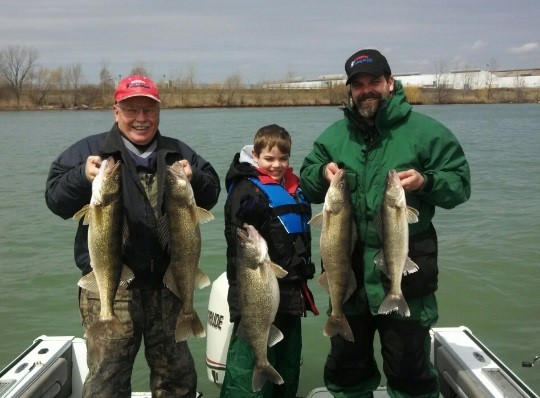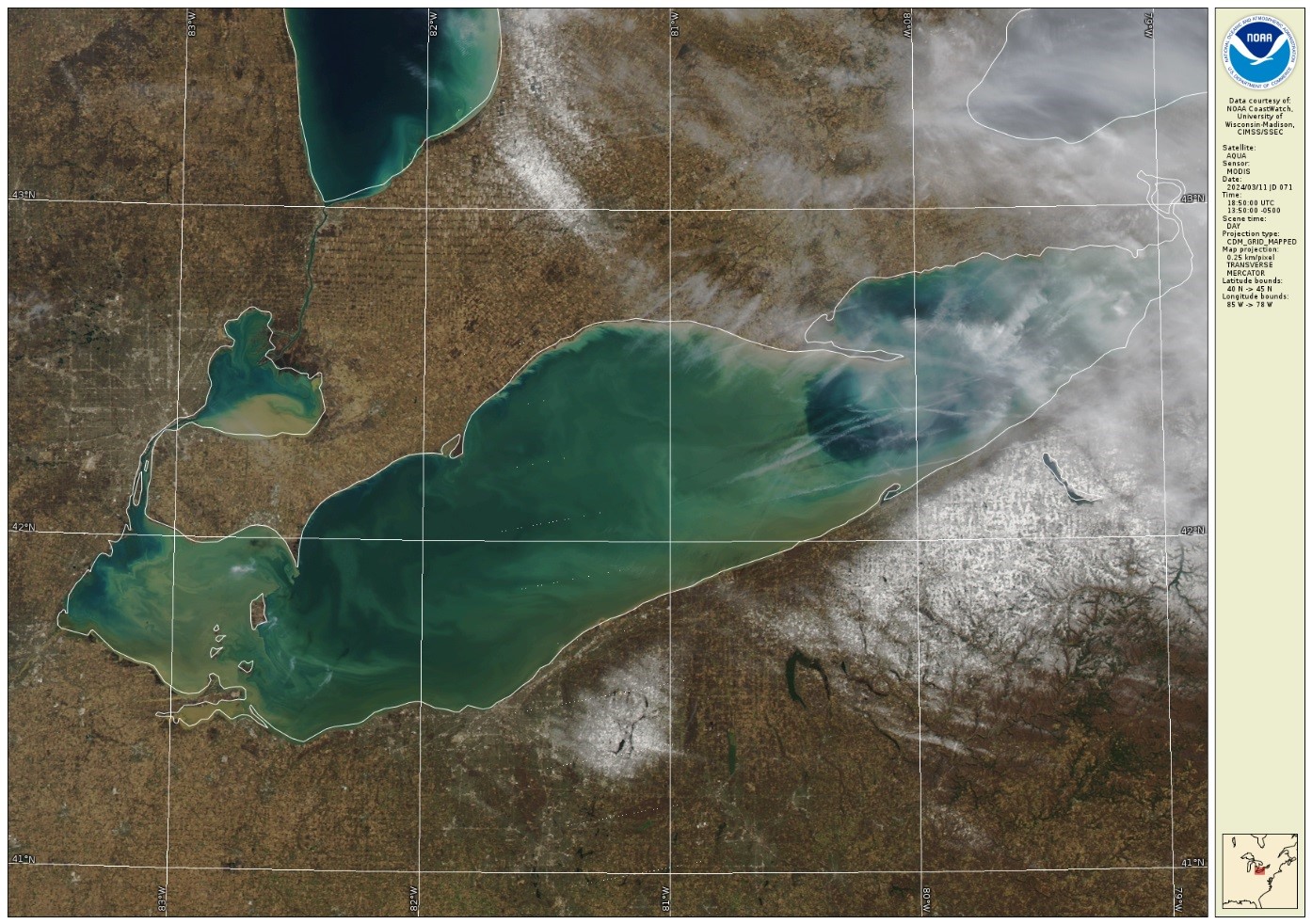8 Adjustments for Dirty Water
By Lance Valentine
 Few things can turn a good fishing trip into a tough one faster than dirty water. Dirty water creates lots of challenges for fish and fishermen. Bait becomes harder for walleye, especially those using open water, to find and chase down to eat. Limited visibility makes it harder to see both bait and lures, and often will turn a bite off over-night.
Few things can turn a good fishing trip into a tough one faster than dirty water. Dirty water creates lots of challenges for fish and fishermen. Bait becomes harder for walleye, especially those using open water, to find and chase down to eat. Limited visibility makes it harder to see both bait and lures, and often will turn a bite off over-night.
Catching walleye in dirty water can still be done, but anglers must lower their expectations, change tactics and pay closer attention to details. In big bodies of water like the Great Lakes and Western reservoirs, dirty water is something walleye anglers deal with on a daily basis and learning how to consistently catch walleye in muddy water can make you the hero at the boat ramp on days that may leave most anglers with and empty livewell.
Read More "CATCHING MORE FISH IN DIRTY WATER”
Here is a short list of things you can do to up the odds the next time you are dealing with dirty water when walleye fishing.
1) Lower your expectations: Dirty water, especially after a day or two, will usually make it hard to catch a lot of fish. Understand that is the case and adjust your mindset and fishing accordingly
2) Find the cleanest water available: It may take a few moves but looking for the BEST water you can find usually leads to more fish than staying in the mud!
3) Play the edges: Finding where dirty water meets water a little cleaner is a great starting point. Edges, even water color edges, hold fish!
4) Fish Shallow: Shallow water and the top 10’ or so of the water column is usually most productive, especially in spring and fall. Sunlight penetrates the dirty water making it warmer and creating a better environment for walleye to chase bait and find your lure
5) Think about sound: Dirty water fishing is the time to bring out your loudest baits. Crankbaits with one large rattle that creates a low frequency “THUD” are key. Fish heavy jigs that make more noise when they hit the bottom and increase the size of spinner blades. Colorado blades also put off the most vibration, so make the switch on your crawler harnesses.
6) Use scent: Walleye can smell very well. Take advantage of that by putting scent on your lures. Anything that makes your lure easier for walleye to find is a plus.
7) Create a larger profile: fish bigger crankbaits, bigger spinner blades, big jigs and large plastics. The idea is to make noise, move water and make your lure easy to find
8) Stay put: Dirty water conditions are best beaten by finding a spot or area with fish on your sonar and STAYING THERE! Find a good spot and fish it hard, make changes until you find something that works. Bite windows will be short, so you want to be in the right place when the bite happens.
 Dirty water is a challenge but there are things we can do pre-trip that can help. If you are fishing on the Great Lakes one of those pre-trip planning steps is checking an overhead satellite view to see where the dirty water is and where it will be on the day of your trip. Sometimes a short drive to another part of the lake will lead to fishing in better water and more success.
Dirty water is a challenge but there are things we can do pre-trip that can help. If you are fishing on the Great Lakes one of those pre-trip planning steps is checking an overhead satellite view to see where the dirty water is and where it will be on the day of your trip. Sometimes a short drive to another part of the lake will lead to fishing in better water and more success.
Read More "DIRTY WATER SCENT AND SOUND”
Fishing for walleye in dirty water can be a challenge but understanding how it affects fish and the adjustments you should make can lead to good fishing in tough conditions. Stay focused, pay attention to details and you can catch fish in the toughest of water color conditions.